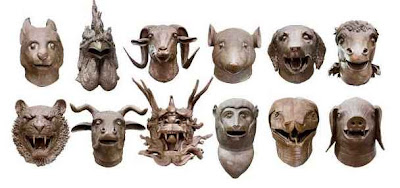It is a bit of a countdown now and preparations escalate for the North Yorkshire Open Studios event. My workshop will be open on June 9th and 10th, and the following weekend 16th and 17th June, 2012 - so not long to go.
Last week artists in the immediate area who are opening their studios, had a little gathering to prepare press releases, exchange literature and we swapped notes about our levels of readyness - it is great to hear about everyone's new work and how they're adapting their workplaces to make them safe and welcoming. Most visitors, in my experience, like to see things just as they normally are in the workshop - but I know I will do some tidying and clearing of stone chips and dust! It would be lovely to hear from you about what you would expect if you were visiting an Open Studio - have you visited ones before - what did you like about them?
We all met in Lockton at Sue Slack's studio, a village not far from me in Lastingham. Sue has a lovely workplace, an old barn with stupendous views, old stone walls, beams and character - and her paintings joyously record the surrounding landscape. She looked after us well with nibbles and my favourite peppermint tea and there we sat, planning and preparing when we were interrupted by new visitors - insistent on coming to join us! They all came and had a good peer through the window, pushing and nosing as if demanding to be let in.
North Yorkshire is such a large county it is difficult to fit all the artists in over the two weekends - so to help plan a route and make the most of the Moors and Coast area, here are some artists nearby - I've mentioned Sue in Lockton, then there's Elisabeth Bailey, Andrea Bailey, Janet Hayton, Lynne Glazzard, Janette Boskett, Caroline Riley, Catriona Stewart, Clare Belbin - see all artists here.
If you would like a brochure for the event please let me know and I will send one out to you.
























































